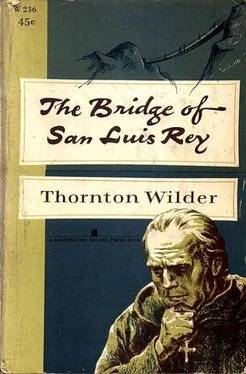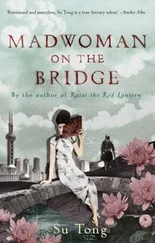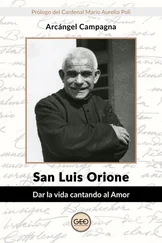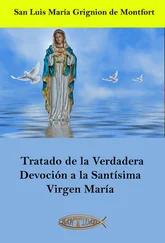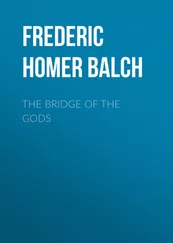This was the old woman who hour by hour would sit upon her balcony, her odd straw hat casting a purple shadow across her lined and yellow face. How often as she turned her pages with her gemmed hands, she would ask herself, almost with amusement, whether the constant pain at her heart had an organic seat. She wondered whether a subtle doctor cutting through to that battered throne could at last discover a sign and lifting his face to the amphitheatre cry out to his students: “This woman has suffered, and her suffering has left its mark upon the structure of her heart.” This idea had so often visited her that one day she wrote it into a letter and her daughter scolded her for an introspective and for making a cult of sorrow.
The knowledge that she would never be loved in return acted upon her ideas as a tide acts upon cliffs. Her religious beliefs went first, for all she could ask of a god, or of immortality, was the gift of a place where daughters love their mothers; the other attributes of Heaven you could have for a song. Next she lost her belief in the sincerity of those about her. She secretly refused to believe that anyone (herself excepted) loved anyone. All families lived in a wasteful atmosphere of custom and kissed one another with secret indifference. She saw that the people of this world moved about in an armour of egotism, drunk with self-gazing, athirst for compliments, hearing little of what was said to them, unmoved by the accidents that befell their closest friends, in dread of all appeals that might interrupt their long communion with their own desires. These were the sons and daughters of Adam from Cathay to Peru. And when on the balcony her thoughts reached this turn, her mouth would contract with shame for she knew that she too sinned and that though her love for daughter was vast enough to include all the colors of love, it was not without a shade of tyranny: she loved her daughter not for her daughter’s sake, but for her own. She longed to free herself from this ignoble bond; but the passion was too fierce to cope with. And then on that green balcony a strange warfare would shake the hideous old lady, a singularly futile struggle against a temptation to which she would never have the opportunity of succumbing. How could she rule her daughter when her daughter saw to it that four thousand miles lay between them? Nevertheless Doña María wrestled with the ghost of her temptation and was worsted on every occasion. She wanted her daughter for herself; she wanted to hear her say: “You are the best of all possible mothers”; she longed to hear her whisper: “Forgive me.”
About two years after her return from Spain there took place a series of inconspicuous events that had a great deal to tell about the inner life of the Marquesa. Only the faintest allusion to them occurs in the Correspondence, but as that is found in Letter XXII which contains other signs I shall do my best to give a translation and commentary of the first part of the letter:
“Are there no doctors in Spain? Where are those good men from Flanders that used to help you so? Oh, my treasure, how can we punish you enough for letting your cold endure so many weeks? Don Vicente, I implore you to make my child see reason. Angels of Heaven, I implore you to make my child see reason. Now that you are better, I beg of you, resolve that when the first warning of a cold comes you will steam yourself well and go to bed. Here in Peru I am helpless; I can do nothing. Do not be self-willed, my beloved. God bless you. I am enclosing in today’s packet the gum of some tree which the sisters of San Tomás peddle from door to door. Whether it be of much use I know not. It can do no harm. I am told that in the convent the silly sisters inhale it so diligently that one cannot smell the incense at Mass. Whether it be worth anything I know not; try it.”
“Rest easy, my love, I am sending His Most Catholic Majesty the perfect gold chain.” (Her daughter had written her: “ The chain arrived in good condition and I wore it at the christening of the Infante. His Most Catholic Majesty was gracious enough to admire it and when I told Him that you had given it me He sent you His compliments upon your taste. Do not fail to send Him one as like it as possible; send it at once, by way of the Chamberlain.”) “He need never know that in order to obtain it I had to walk into a picture. Do you remember that in the sacristy of San Martin there is a portrait by Velasquez of the Viceroy who founded the monastery and of his wife and brat? and that his wife is wearing a gold chain? I resolved that only that chain would do. So one midnight I slipped into the sacristy, climbed upon the robing-table like a girl of twelve and walked in. The canvas resisted for a moment, but the painter himself came forward to lift me through the pigment. I told him that the most beautiful girl in Spain wished to present the finest gold chain that could be found to the most gracious king in the world. It was as simple as that, and there we stood talking, we four, in the gray and silvery air that makes a Velasquez. Now I keep thinking about a more golden light; I keep looking at the Palace: I must pass the evening in a Titian. Would the Viceroy let me?”
“But His Excellency has the gout again. I say ‘again’ because the flattery of the court insists that there are times when he is free of it. This being Saint Mark’s day His Excellency started out to visit the University where twenty-two new doctors were being brought into the world. He had hardly been carried from his divan to his coach when he screamed and refused to go any farther. He was carried back to his bed where he broke a most delicious cigar and sent for the Perichole. And while we listened to long doctrinal addresses, more or less in Latin, he heard all about us, more or less in Spanish, from the reddest and cruellest lips in town.” (Doña María permitted herself this passage, although she had just read in her daughter’s last letter: “ How many times must I tell you to be more cautious in the things you say in your letters? They often show signs of having been opened on the journey. Nothing could be more ill-judged than your remarks on the you-know-what-I-mean at Cuzco. Such remarks are not funny, even though Vicente did compliment you upon them in his postscript, and they might get us into a great deal of trouble with Certain Persons here in Spain. I continue to be astonished that your indiscretions have not long since led to your being ordered to retire to your farm.”)
“There was a great press at the Exercises and two women fell from the balcony, but God in His goodness saw that they fell on Doña Merced. All three are badly hurt, but will be thinking of other things within a year. The President was speaking at the moment of the accident and being short-sighted could not imagine what the disturbance of cries and talk and falling bodies could be about. It was very pleasant to see him bowing, under the impression that he was being applauded.”
“Speaking of the Perichole, and of applause, you should know that Pepita and I decided to go to the Comedia this evening. The public still idolizes its Perichole; it even forgives her her years. We are told that she saves what she can, every morning, by passing alternate pencils of ice and fire across her cheeks.” (Translation falls especially short of this conceit which carries the whole flamboyance of the Spanish language. It was intended as an obsequious flattery of the Condesa, and was untrue. The great actress was twenty-eight at this time; her cheeks had the smoothness and polish of dark yellow marble and would certainly have retained that quality for many years. Apart from the cosmetics required by her performances the only treatment Camila Perichole afforded her face was to throw cold water at it twice a day, like a peasant woman at a horse trough.) “ That curious man they call Uncle Pio is by her all the time. Don Rubío says that he cannot make out whether Uncle Pio is her father, her lover, or her son. The Perichole gave a wonderful performance. Scold me all you like for a provincial ninny, you have no such actresses in Spain.” And so on.
Читать дальше
